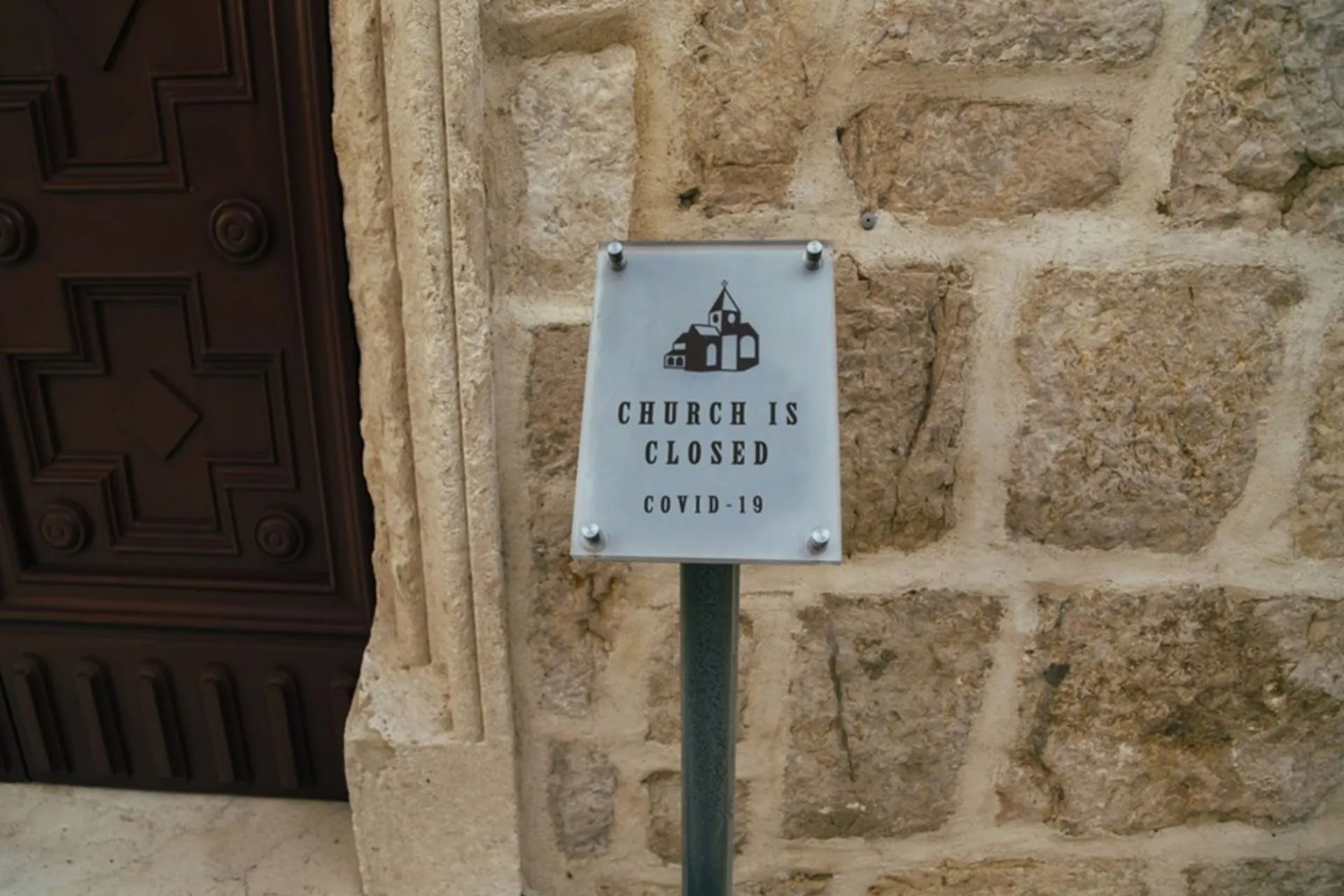If you read through the New Testament, you will find that the members of the first-century church frequently met together in person. We know that this was true of the church in Jerusalem because there are ample Scripture verses that tell us this. The believers joined together in prayer shortly after the ascension of Jesus (Acts 1:12–14). At the beginning of Acts 2 we find that they were assembled “in one place” (Acts 2:1 NIV) when the Holy Spirit was poured out (Acts 2:1–4). Other Scriptures also indicate that they came together as a group (Acts 2:44, 46; 4:23–31; 5:12; 12:12). Meeting in person, that is, being in community with other believers was important to these early Christians. However, this coming together was not something that was unique to the church in Jerusalem.
We find that believers in other places also gathered together. The Christians in Antioch assembled in order to be taught by Barnabas and Paul (Acts 11:25–26). The churches that Paul and Barnabas established on their first missionary tour apparently came together in their respective locations in order to receive additional ministry from the two missionaries (Acts 14:21–23). Paul and Silas went to the home of Lydia to encourage the Christians there before they left Philippi (Acts 16:40). Paul also met with some believers in Tyre (Acts 21:3–4).
In-person gatherings have been the regular practice of the church throughout its history.
In addition to the texts in Acts there is also evidence in the epistles that the early believers gathered together in person. In the book of 1 Corinthians there are multiple references to being gathered together as a group (1 Cor 5:4–5, 11:18, 33; 14:26). The reference in 1 Corinthians 5:4–5 deals with a matter of church discipline. In context the two references found in 1 Corinthians 11 have to do with their gathering for communion, and the one in chapter 14 deals with their worship service and the ministry of spiritual gifts. Additional texts, which indicate that the early Christians gathered together as a group, include Jude 12 and the verses that mention churches meeting in houses (Rom 16:3–5; 1 Cor 16:19; Col 4:15; Phlm 2). I am confident that other Scriptures could also be supplied to demonstrate that the early believers gathered together for in-person meetings.
Beyond all of these texts that speak of the practice of the first-century Christians, we also have a very direct statement about the importance of coming together as the people of God. The writer to the Hebrews tells us we should not be “giving up meeting together, as some are in the habit of doing” (Heb 10:25 NIV). Why was this instruction given? The obvious answer is because some believers were doing this very thing. But I think there are other reasons as well. The previous verse tells us that believers are to “spur one another on toward love and good deeds” (Heb 10:24 NIV), we are also to encourage each other (Heb 10:25). Also, if we include some of the information from the previous paragraph which was drawn from the book of 1 Corinthians, it is in our gatherings that we worship, take communion, and minister spiritual gifts to one another (1 Cor 11; 1 Pet 4:10). The practices mentioned in Acts 2:42 should also be done as a group. In-person gatherings have been the regular practice of the church throughout its history.
While we may prefer in-person gatherings, the pandemic has put pressure on the church to change if it wants to continue to maintain the essentials of Christian community.
Now fast forward to 2020. COVID-19 appears on the scene and spreads around the world. It proves to be a major health problem. Some who contract it have no symptoms, others become seriously ill and required hospitalization, and still others die. This pandemic impacted all of society, including the church. In fact, it continues to do so until this present day. In order to help control the spread of COVID-19 various protocols were put in place. Common ones in the United States included: wearing masks, practising social distancing, and the frequent washing of hands. The implementation of social distancing limited the number of people who could gather in a group. Many employers had their employees work from home. In some cases, “non-essential” gatherings were cancelled altogether.
This situation presented a challenge. Was the church essential or non-essential? Should it continue to meet, sometimes contrary to health and governmental guidance, or not? No matter how one answers these questions it is clear that the church would be impacted by this pandemic, it would experience some measure of pressure. Due to this situation many churches moved to online formats. This move is an interesting one. In the past I heard about people who said they didn’t go to church, instead they watched it on television. Christians who did attend church would usually reply that this was not acceptable. Now, with the pandemic, we are often telling fellow believers to watch church services on a screen! Of course, the circumstance now are much different. This change, though not ideal, has helped the church to continue to “meet together.”
But this disruption of the norm has had both positive and negative consequences. On the negative side we have experienced some losses. If a person does not have the technology to connect to an online service they are, unintentionally, excluded or limited. For example, if one does not have a camera for their computer or a cell phone they cannot participate visually in an online service. Thus, the person loses visual contact with other members of the church. However, this person might be able to participate in an online meeting with audio if they can call on a phone, perhaps a landline. Also, with the move to an online format, believers have lost some other features of an in-person service. While everyone can sing during the worship time they cannot sing as a group, because everyone cannot have their microphone on during an online session. So the group dynamic is lost. In addition, there is no opportunity for prayer with the laying on of hands (Acts 13:3; 1 Tim 4:14) because people are in different locations. Though I do not have any data to support what I am about to say I would not be surprised if some churches have lost members and income during the pandemic.
Thankfully all has not been lost. Through these online meetings, people can hear and perhaps also see one another. Announcements can be made, and prayer requests can be shared. Christians do not have to be in the same location for prayer to work (the apostle Paul frequently prayed at a distance for the churches he planted). In addition, preaching can also be powerful online. While we may prefer in-person gatherings, the pandemic has put pressure on the church to change if it wants to continue to maintain the essentials of Christian community. The church has had to adapt. This is not necessarily bad, adapting to change can be a redeeming quality. Believers in some places in the world today have been forced to do church differently due to persecution, they have had to adapt to their circumstances. Except for Dr Michael Brown’s book When the World Stops (Charisma House, 2020) I have not read much that others have written about the pandemic. However, I am confident that some have addressed the changes that it has brought about and the lessons that we, as the church, can learn from it. In all of this we should not lose sight of the fact that we should thank God that we live in a time in which we have options open to us. We can be the church, even in the midst of trying circumstances!





